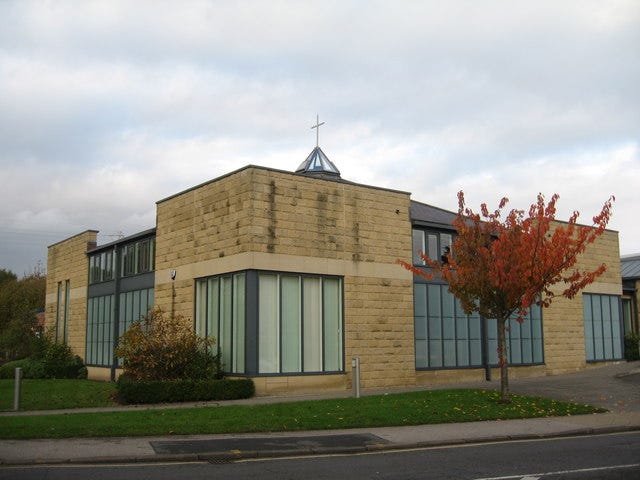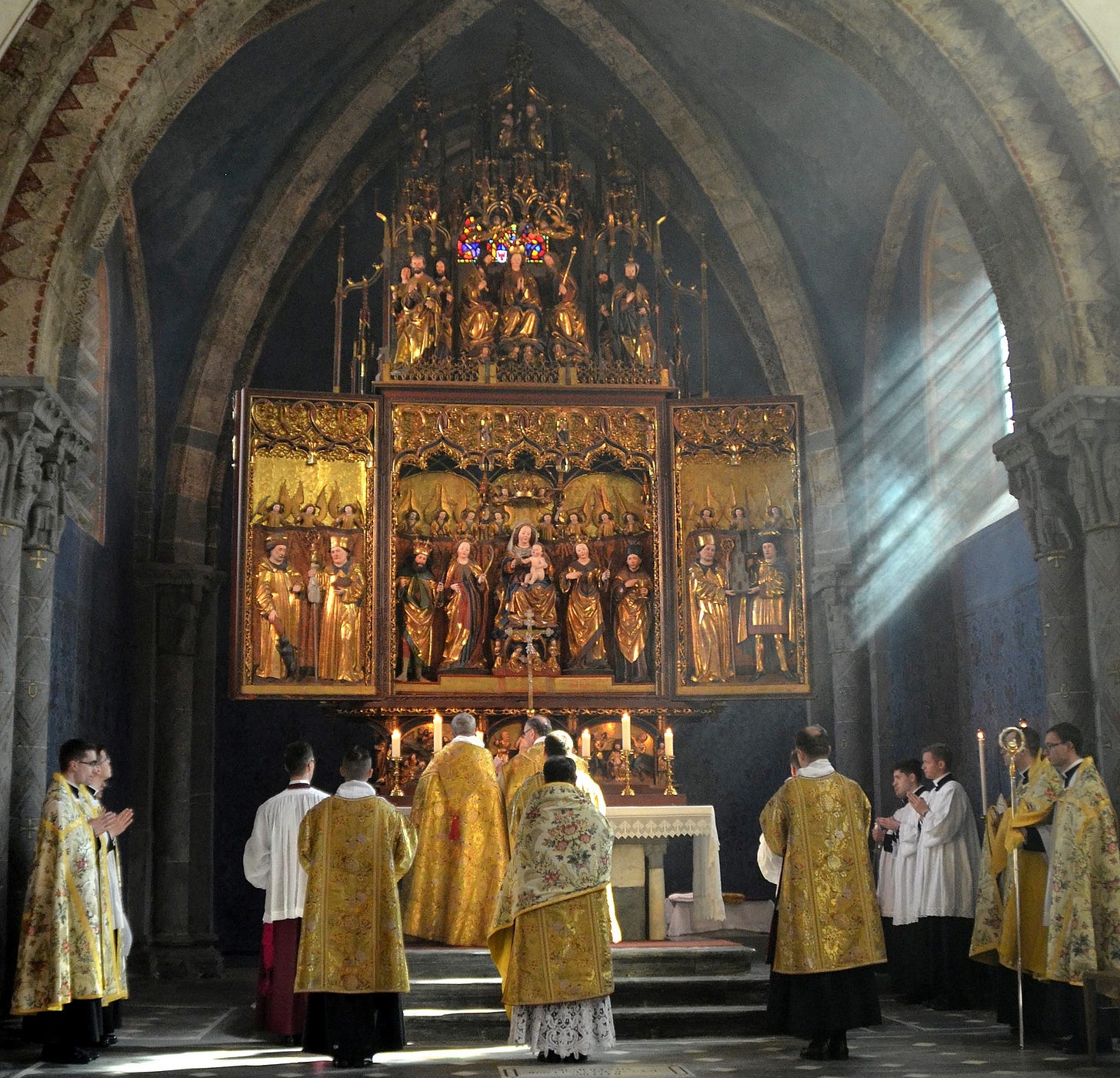St. John Henry Newman: Father of Vatican II—or Godfather of the Traditionalist Movement? (Part 3: Conclusion)
Our three-part exploration of Newman the Traditionalist concludes today with further liturgical topics, absolutely relevant to our current situation. He is, in short, the Doctor of the Church for our times.
But before we dive into that… a brief message from the sponsored:
SPECIAL OFFER
Tradition & Sanity is still holding firm at #21 worldwide in the category of Faith & Spirituality (below some Buddhists, Apocalypticists, Zionists, astrologers, and feminists — but let’s not forget the good people at The Pillar, who are nearly dominating the field at #2). Wouldn’t it be wonderful if we could make the traditionalist Catholic presence felt even more strongly?
In these days leading up to the great feast of the Assumption, we are offering an opportunity not to be missed:
Subscribe to Tradition & Sanity for 25% off, forever!
Close to 14,000 readers of this Substack are relying on the support provided by only 8.8% among them who have taken out paid subscriptions.
This 8.8% (if you’re a part of it, thank you and God reward you!) is the core group that supports our mission and makes it feasible to continue — not just for me, but for my entire line-up of stellar contributors: Sebastian Morello, Joseph Shaw, Fr Thomas Crean, Julian Kwasniewski, Anthony Jones, Angela Cuba, and John Mac Ghlionn.
We have no advertising popping up all over or mining your personal info. There are no think-tanks behind us. No organizations. Not the USCCB (that’s for sure!). We’re just a bunch of writers and readers who are passionate about the traditional Catholic Faith.
IN SHORT: If you benefit from what you find at Tradition & Sanity, I ask you to think seriously about taking out a paid subscription.
What are the benefits for you?
Full access to Monday’s exclusive feature
Full access to all the archives (where you’ll find a lot of good stuff!)
Most of all: being an integral part of the mission and work of this Substack well into the future
N.B. This offer runs until the Feast of the Assumption this Friday.
For those who are already full subscribers or those who might like to contribute in a different manner:
Continuing now with our regular Monday feature . . .
A Church is Like Heaven—or Should Be
We are frequently told by well-meaning modern liturgists that the Mass is a foretaste of heaven and a participation in the worship of the saints and angels. I’m sorry to break it to them, but the experience of most Catholics most of the time seems more like a foretaste of purgatory, and, in any case, suggests nothing of the kingly majesty, lavish beauty, hierarchical order, angelic songs, and aweful silence that the visions of heaven in the Bible or in the great works of Christian art suggest.

Newman’s vision of what heaven will be like is all the more challenging to read in the postconciliar period, when his comparison of it to services in church seems to apply to nearly no Catholic parish except those that have resolutely returned to the traditional Latin liturgy:
Heaven then is not like this world; I will say what it is much more like,—a church. For in a place of public worship no language of this world is heard; there are no schemes brought forward for temporal objects, great or small; no information how to strengthen our worldly interests, extend our influence, or establish our credit. These things indeed may be right in their way, so that we do not set our hearts upon them; still (I repeat), it is certain that we hear nothing of them in a church. Here we hear solely and entirely of God. We praise Him, worship Him, sing to Him, thank Him, confess to Him, give ourselves up to Him, and ask His blessing. And therefore, a church is like heaven; viz. because both in the one and the other, there is one single sovereign subject—religion—brought before us.1
Such views about the afterlife and the way in which a church service should emulate the state of beatitude would probably be written off today by many as “romantic” or “romanticized,” as much as would be Dom Guéranger’s reconstruction of medieval monasticism, Dom Mocquereau’s reinterpretation of plainchant, or Pugin’s and Viollet-le-Duc’s reclamation of Gothic architecture. Yet what all of these 19th-century geniuses had in common is their strong artistic intuition and lively religious imagination. In short, they were not rationalists and antiquarians, but believers and emulators. This is why they admired the Middle Ages and found inspiration in it to oppose the secularizing spirit of the Enlightenment.
Newman was concerned about the worldliness that ever threatened to creep into the Church, as he complains on one occasion about “the American Church” (i.e., the Episcopalians):
Keep reading with a 7-day free trial
Subscribe to Tradition and Sanity to keep reading this post and get 7 days of free access to the full post archives.



